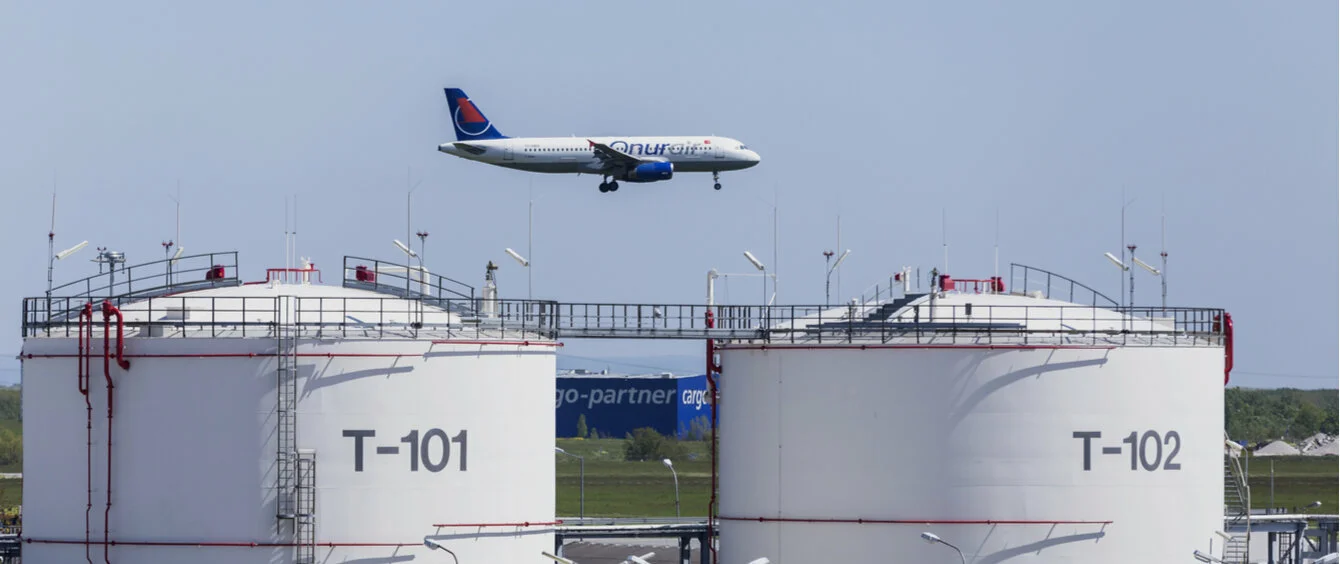Synthetic fuels have so far only been produced in very limited quantities in a handful of pilot plants. E-fuels are still a long time away from market entry. At the same time, they can provide a climate-friendly alternative to fossil fuels in shipping, aviation and heavy-duty transport. In other words, in those areas of application in which vehicles will not be running on electric motors and batteries in the foreseeable future. In the new part of the “Power-to-X” series, the en:former shows how the technology could become competitive.
Making synthetic fuels marketable – this is essentially the main goal of the Global Powerfuel Alliance’s (GAP) initiative. In order to achieve this goal, they are looking to the International Civil Aviation Organisation of the United Nations to campaign for global blending quotas for kerosene produced using electricity from renewable sources.
In addition to its 16 companies and associations in the German and international energy sectors, the GAP’s members include Lufthansa, the German Air Transport Association, ExxonMobil and Uniper. In a position paper, they argue that the costs would already be justifiable if only kerosene based on crude oil were to be mixed with synthetic kerosene according to a specific blending quota. In this way, powerfuels would help the UN to place renewable fuels at the centre of its climate protection and sustainability strategy.
Powerfuels, also referred to as e-fuels, are synthetic fuels, which are produced with what are referred to as Power-to-X technologies. The idea behind them is simple: Electricity generated from solar or wind capacities (power) is converted into another energy source (X), allowing other sectors such as transport or heating to be supplied with green, renewable energy. Synthetic fuels use power to first produce hydrogen in an electrolyser. The resulting hydrogen together with carbon dioxide can then be converted into liquid fuels.
synthetic fuels that are produced using Power-to-X technologies. Power from renewable energies is to be converted into other energy sources, for example.
“The price of an air ticket would increase in line with the blending quota,” says a press release. The GAP is suggesting an initial quota of two percent. This means a plane ticket which would normally cost 250 euros would cost five euros more.
Synthetic fuels are necessary
The direct electrification of many applications is considered to be a tried and tested way to make energy supply more climate-friendly. However, it is also fast becoming clear that the internationally agreed climate targets cannot be achieved using this approach alone: “Emission-free chemical energy sources are indispensable,” Frank Heunemann recently said in an interview with en:former. The CEO of transmission system operator Nowega is the spokesperson for the GET H2 initiative, which aims to establish a national hydrogen infrastructure.
"Powerfuels are the key to green aviation." Andreas Kuhlmann, GAP’s Chairman and CEO of dena
Hydrogen is in itself an emissions-neutral energy source, provided it is generated using green electrolysis methods, similarly to gasoline or kerosene produced using power-to-liquid technology. To save weight, planes in particular require fuel which has a high energy density: “Powerfuels are the key to green aviation,” says Andreas Kuhlmann, the GAP’s Chairman and CEO of dena.
No market for powerfuels at the minute
However, this process is very energy-intensive. Even when using optimum electrolysis technologies, at most about 84 percent of the energy of the electricity used can be stored in the fuels produced. And the efficiency only decreases further with every conversion. The GAP study, for example, bases its calculations on an efficiency of 42% for the conversion of electrical energy to powerfuels.
A large portion of the remaining energy can be used and sold as heat, if necessary. Nevertheless, these plants have not yet proven to be economically viable. The obtained fuels are simply not able to compete with their fossil counterparts on price. According to the GAP, the price tag for conventional aviation fuel is less than half a euro per litre, and current studies estimate the price of its synthetic equivalent over the next few years to be somewhere between 1.41 and 4.54 euros per litre, according to the position paper.
Aviation to jump-start the sector
A blending quota of green aviation fuel would see the costs fall. Although it may be true that synthetic aviation fuel is more expensive than conventional kerosene, the increased demand could trigger a chain reaction that has already been seen in other areas of the energy transition, even when based on the GAP’s calculations. After all, more investors equals faster learning processes, larger plants, and thus considerable cost reductions.
According to the GAP, the measures taken to date by the members of the International Civil Aviation Organisation do not even scratch the surface of what is needed to achieve the desired emissions targets, and their policies have mainly been based on compensatory measures, i.e. financing climate protection projects in other areas, and using biofuels. Biofuels, however, require much more land and water, says the GAP, which means that unlike powerfuels, they therefore compete with food and water supplies. Blending quotas could, on the other hand, be something of a jump-start for synthetic fuels.
